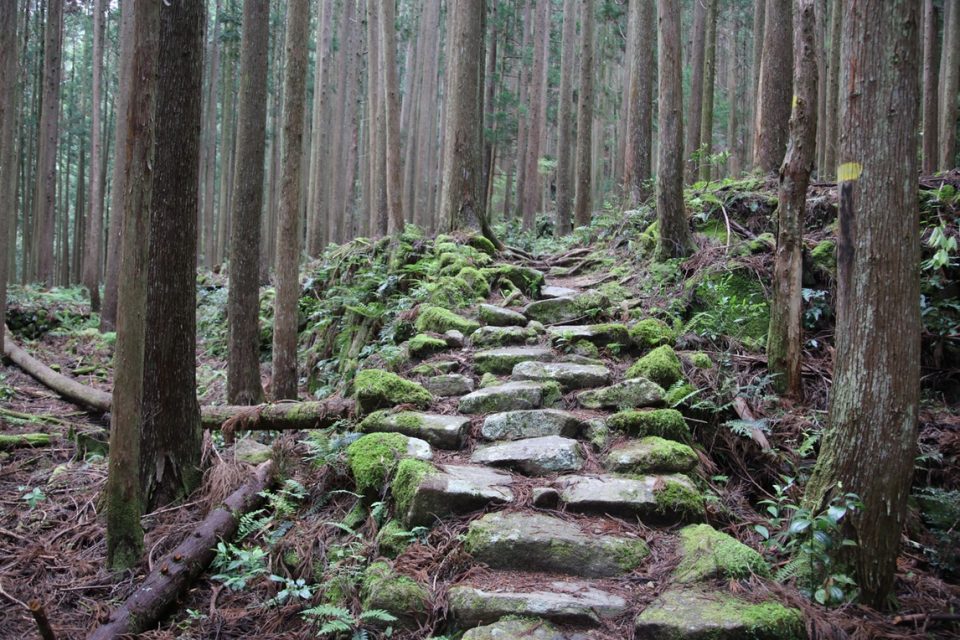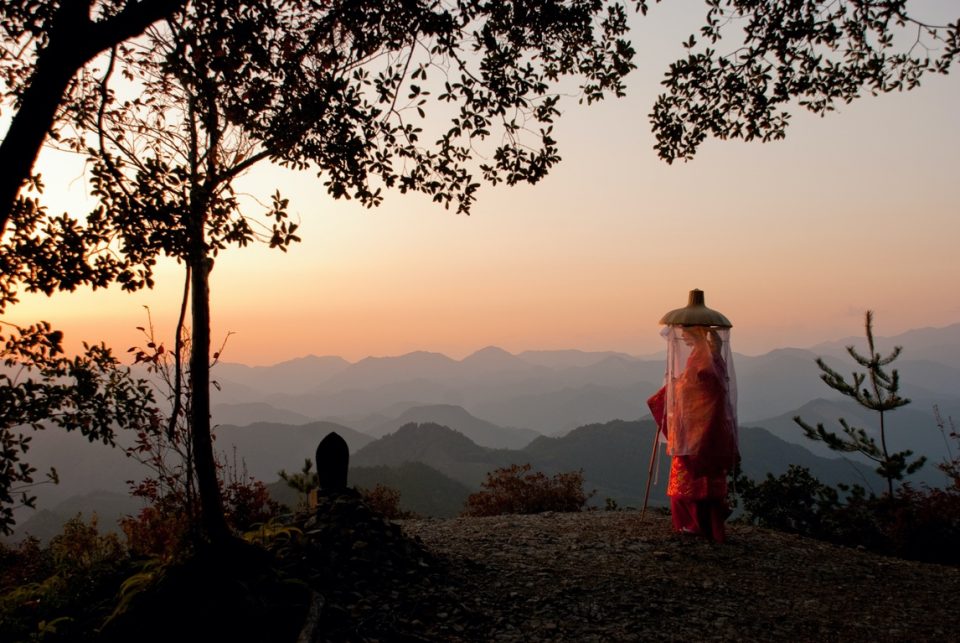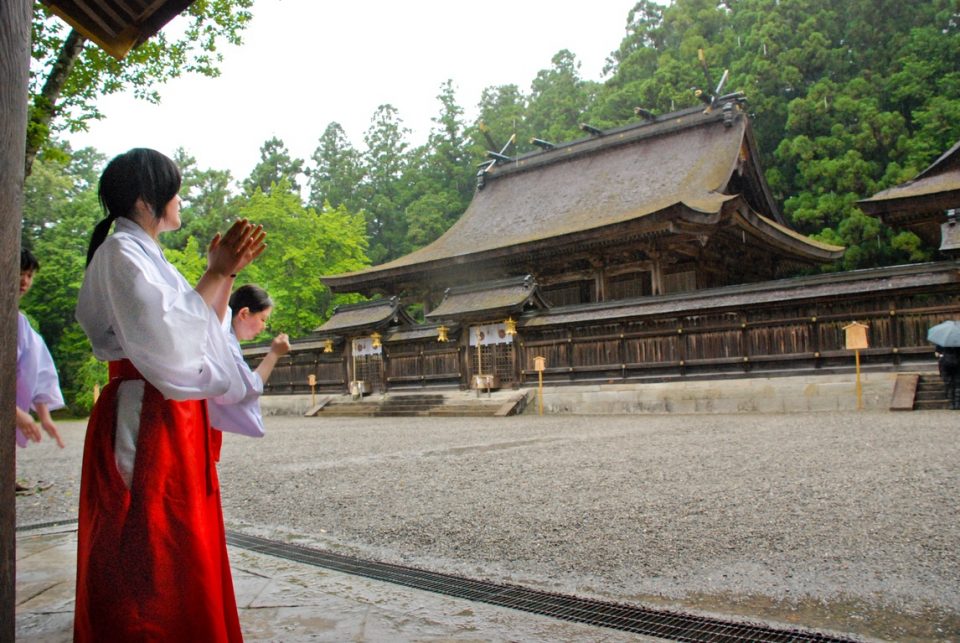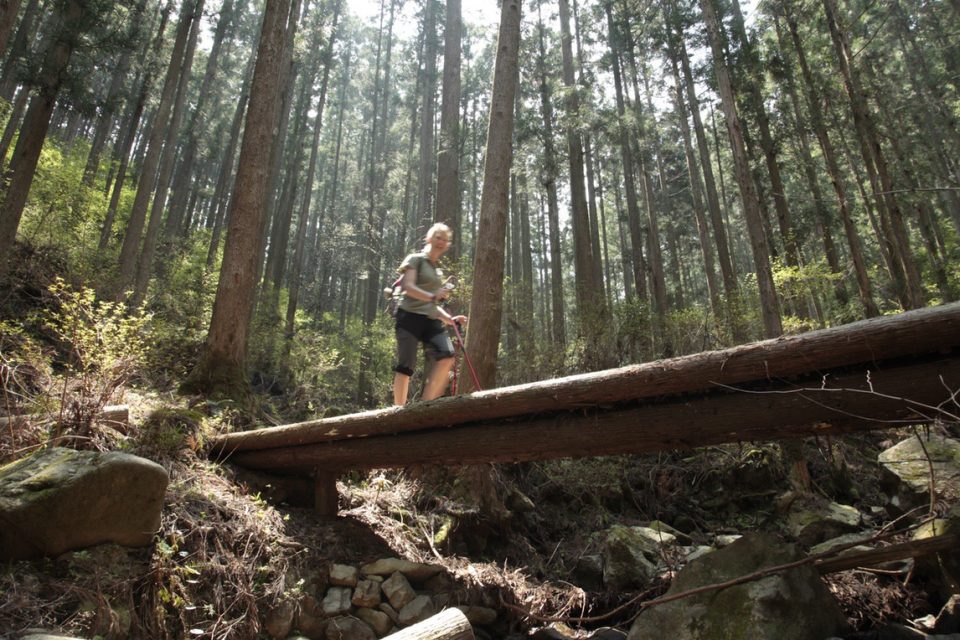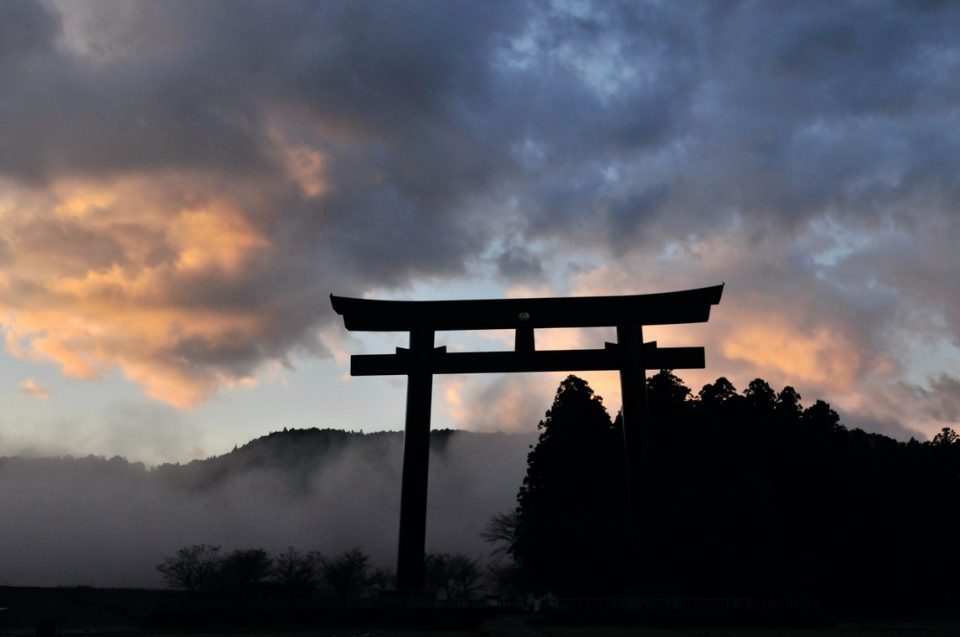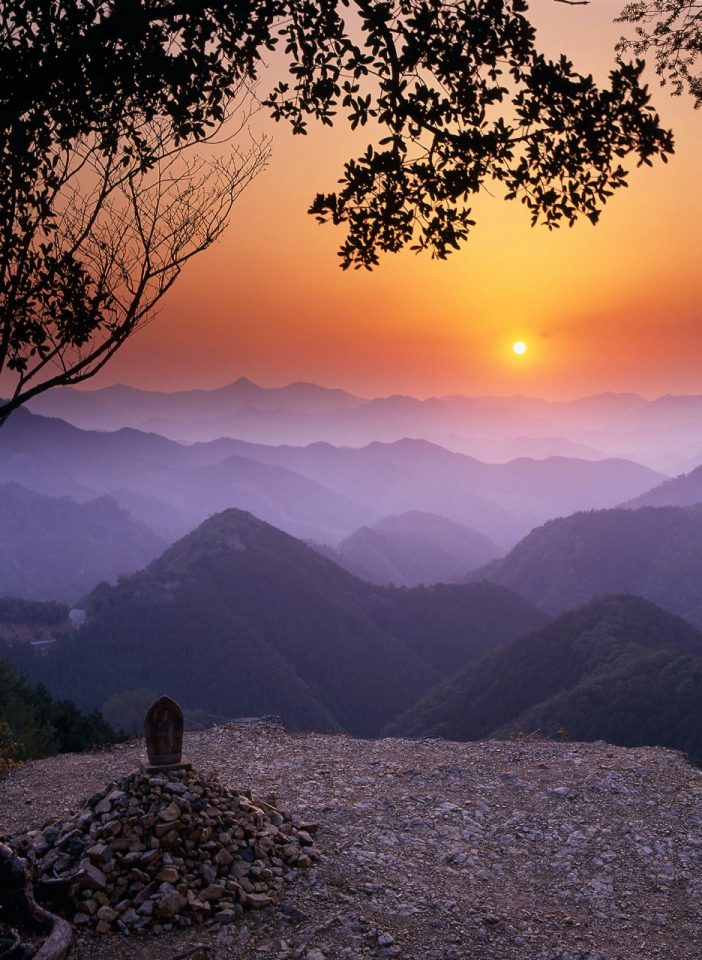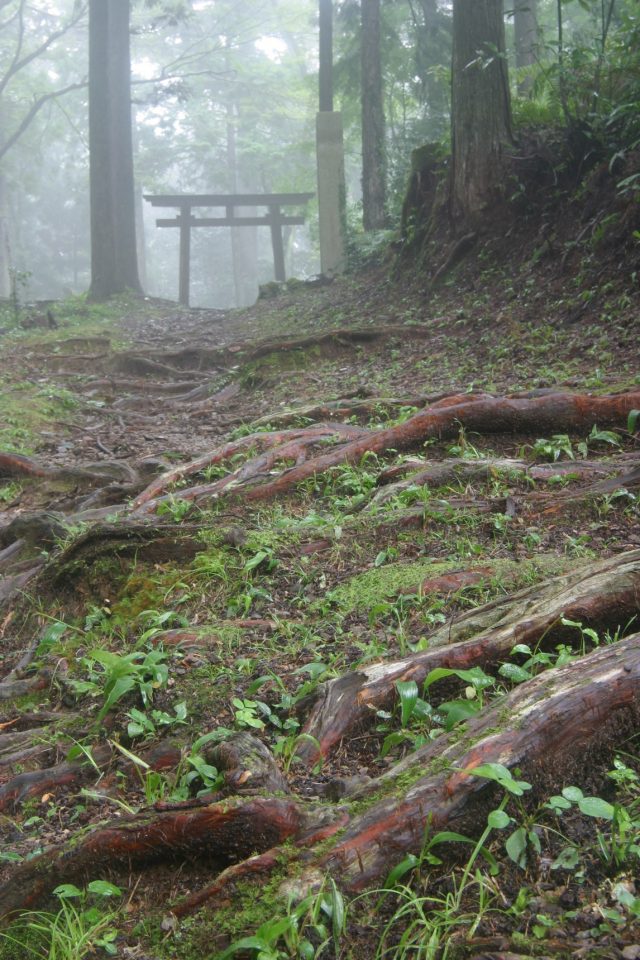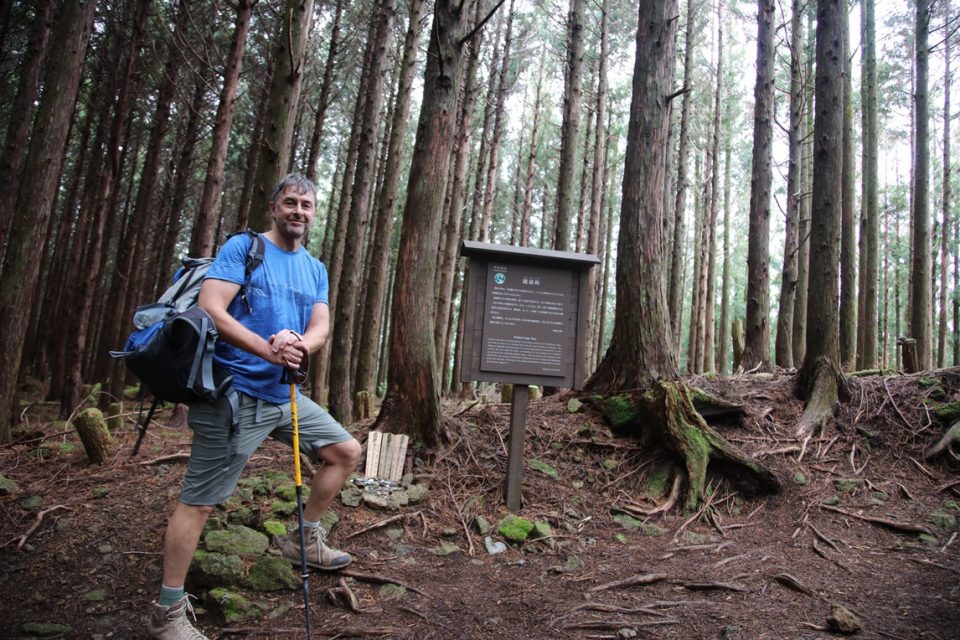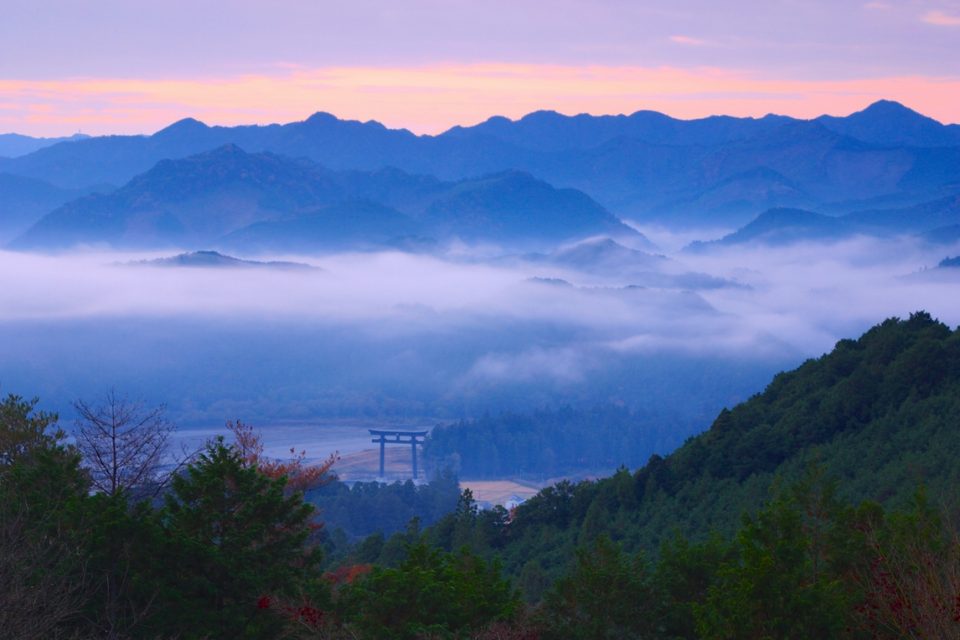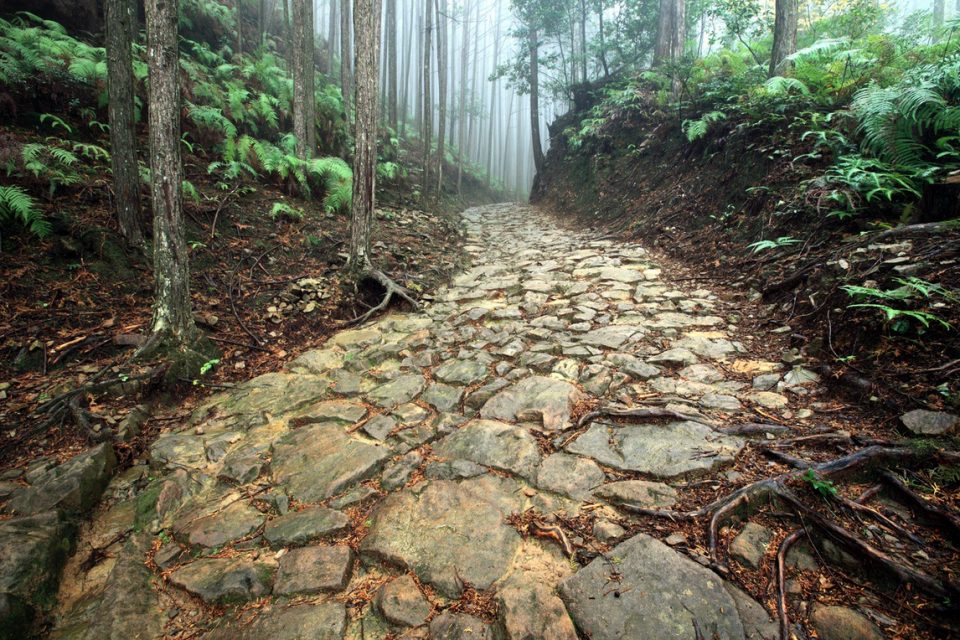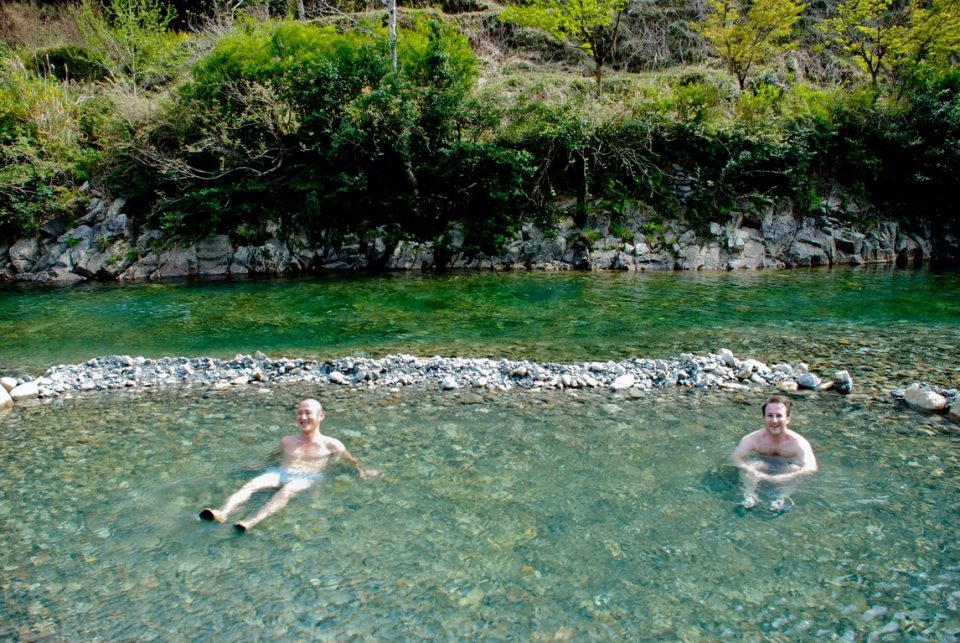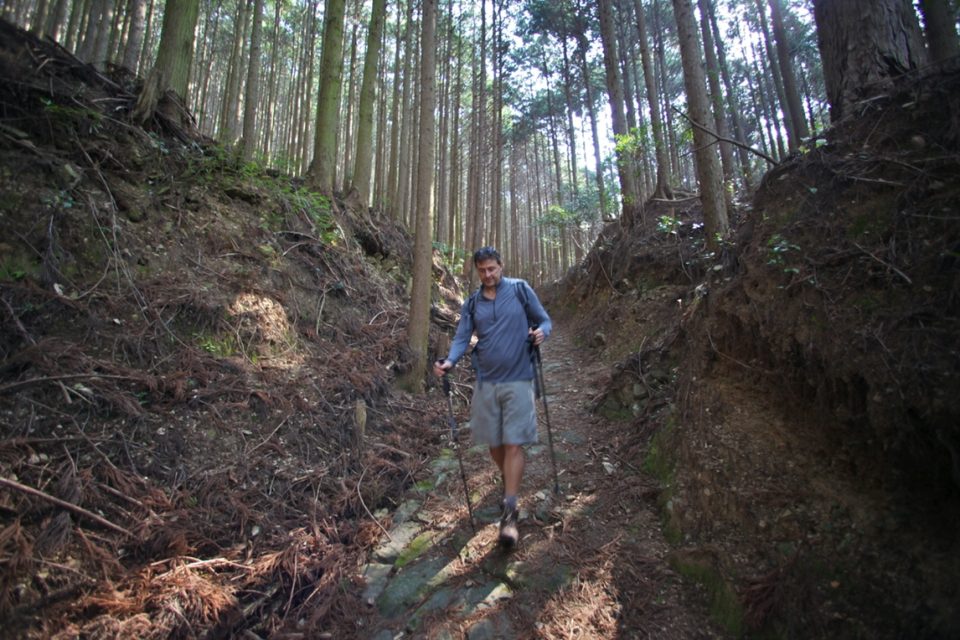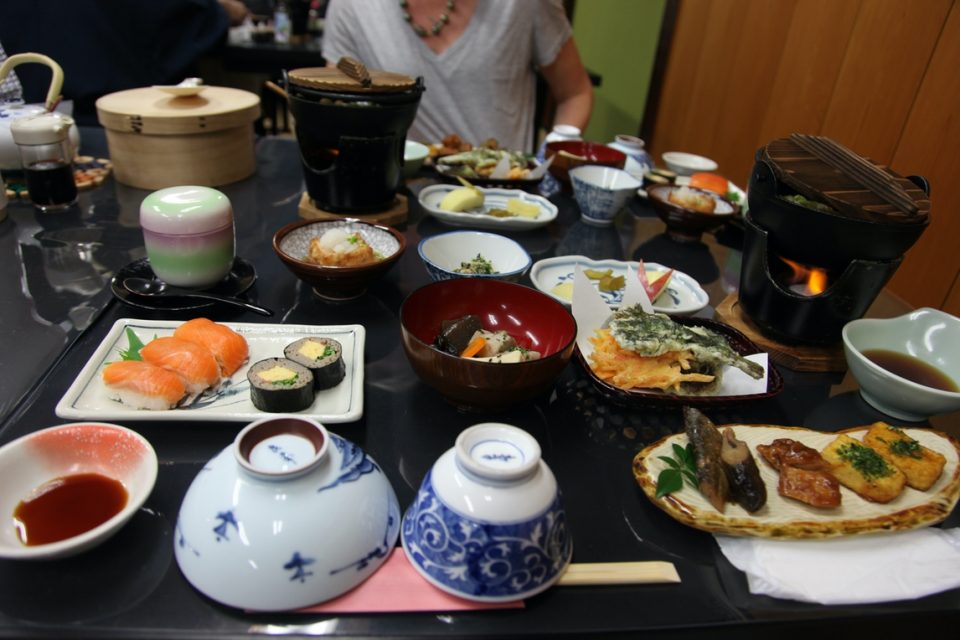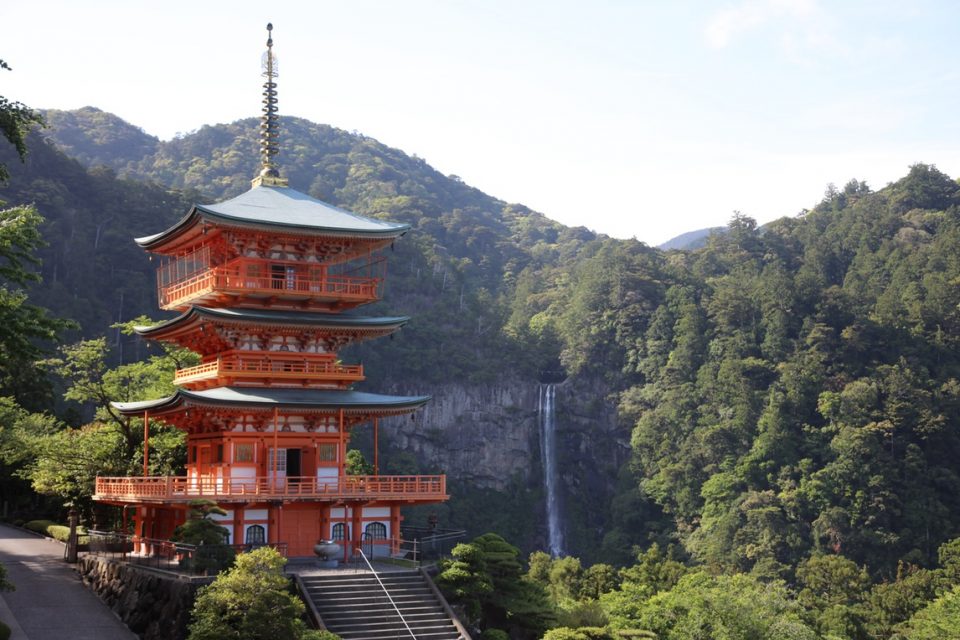length
8 Days
difficulty
Challenging - Strenuous
trip cost
from $2790 pp
Nature Immersion
Cultural Interest

Highlights
Get Ready For
- Beautiful, changing colours are a highlight for people on this trek
- A great option for solo travellers
- Enjoy delicious handmade Japanese food with fresh local ingredient
- Traditional guesthouses with lots of character and friendly host
- Soak in an onsen to soothe your muscles (and spirit!) after a day of walking
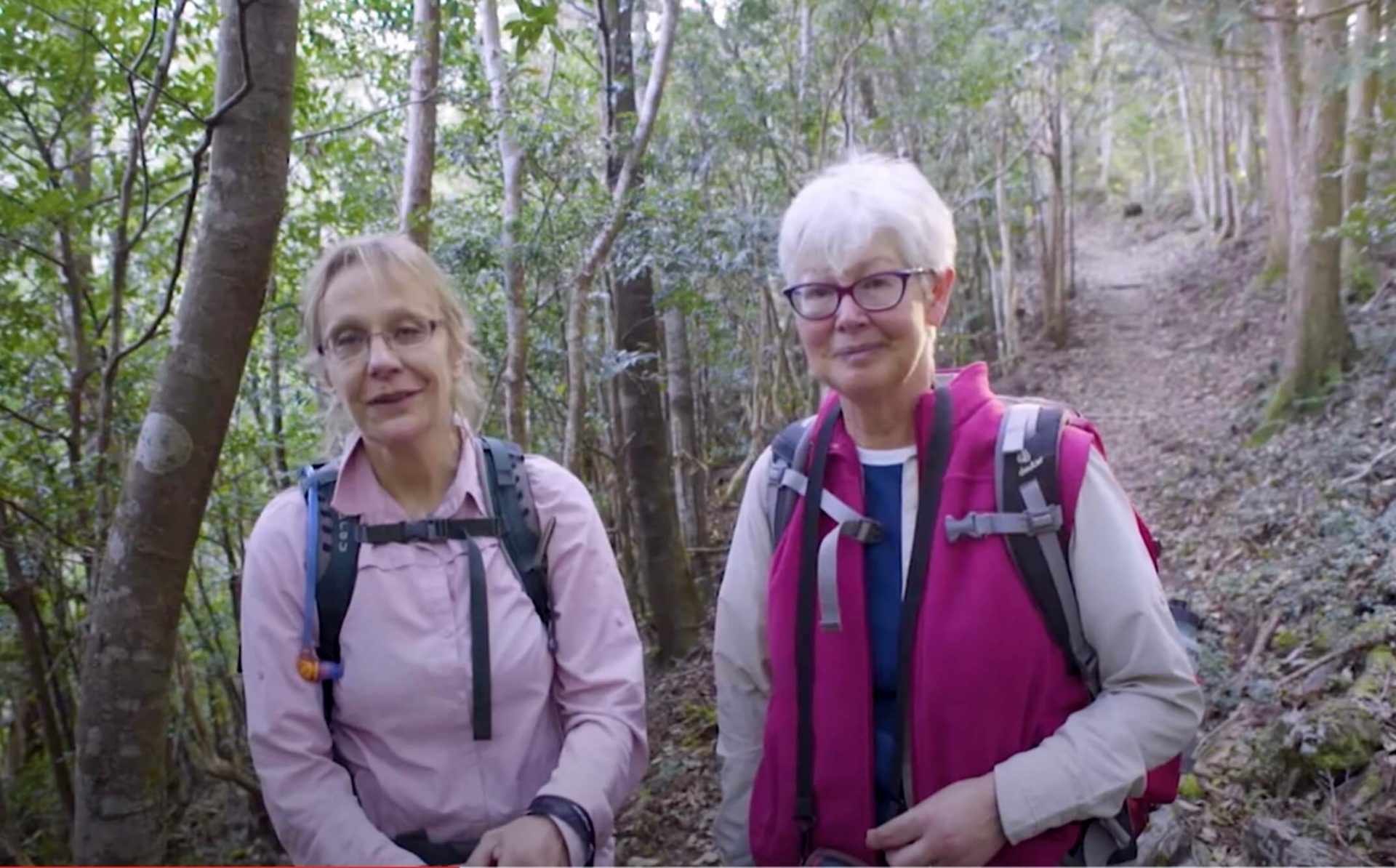
CLIENT EXPERIENCES
ON THE TRAIL
Join RAW Travellers Robyn and Jan as they walk the Kumano Kodo in Japan to find out what they’ve enjoyed the most on this iconic walking trail.
READ: ‘A Sacred Journey’, Jetstar Magazine
Journalist Jayne D’Arcy discovers her inner pilgrim along the Kumano Kodo trail.
Itinerary
Itinerary
The best way to reach Kii-Tanabe is by train – there are frequent trains from Kansai Airport, Osaka and Kyoto travelling southwards to Kii-Tanabe (train tickets not included and can be purchased locally). Here the railway line parallels the coast and avoids the steep mountainous interior. The nearest major International Airport is Kansai (Osaka), from where you can take a 2 hour train journey to Kii-Tanabe. Train travel from Osaka to Kii-Tanabe takes just over 2 hours and from Kyoto approximately 2.5-3 hours.
Kii-Tanabe is the gateway town to the Imperial Route of the Kumano Kodo and a city surrounded by the Pacific Ocean on one side and mountains on the other. The town is also home to the Tanabe Tourist Information Center – your tour orientation is scheduled with the staff here. You will be transferred to your accommodation for the evening.
Meals: D
You will have time to explore the area this morning before travelling to Takijiri to commence your walk. Today’s walk is short in distance but a fairly steep uphill climb up to Takahara, a rural hamlet on a ridge, noted for its ancient shrine and a spectacular view over the surrounding Hatenashi Mountain Ranges. Reminders of the past, including Buddhist statues and Oji shrines, line the route along the ancient highway as you climb upwards.
Meals: B, L, D
Leaving Takahara behind, you head further into the mountains along the old trail, past bamboo forest and then into the pencil pine. You continue to pass by reminders of the old highway, including an ichirizuka distance marker and the sites of old former tea houses, which provided rest and shelter to pilgrims up until the early 20th century. Continuing on you crest the Hashiori-Toge pass after a short climb. The trail then descends past the Three-Fold Moon viewing area, from where it is a short climb to the small but famous Gyuba-doji statue. Your descent takes you along a cobbled path and staircase to Chikatsuyu, a small village and one of the few places where you can get limited supplies or drinks. Your final stretch of the day takes you on a climb to Tsugizakura-oji and your accommodation for the evening. Nearby is a grove of giant cedar trees, some of which are reputed to be 800 years old.
Meals: B, L, D
Today’s walk will bring you along many forest paths and eventually some mountain top villages before descending to Hongu. The walk starts with climbs over a number of passes and there is a detour in place due to landslides on the main path. There are few facilities on the first part of today’s route which is through the forest before eventually leading you to the shrine at Hosshinmon-oji. You will continue through small settlements and get your first glimpse of the great Kumano Hongu Taisha Shrine and the giant torii gate in the valley below.
Kumano Hongu Taisha is the main shrine in the area, to which all roads in the Kumano Kodo pilgrimage lead. A long stone staircase leads to the sacred grounds of the shrine, located on a ridge and surrounded by giant cedar and cypress trees. After looking around the impressive shrine you will jump on a local bus to our evening destination at nearby Kawayu Onsen, a charming little hot spring village.
Arriving at your overnight location is a treat for tired walkers as the steam billows from the thermal rivers and there is the promise of a relaxing onsen after your exertions. The onsen thermal hot spring baths are an important part of the Kumano Kodo traditions with pilgrims performing hot water purification rituals in preparation for visiting the shrine. This evening enjoy a delicious Japanese meal in your accommodation.
Meals: B, L, D
Today you can either completely relax and take in the local onsens or perhaps return to Hongu village for further explorations. If you wish to stretch your legs a little then walk back to Hongu on the Dainichi-goe route from Yunomine Onsen – this is a steep but delightful walk, passing some remarkable old carved statues at Hanakake Jizo, overgrown by tree roots.
Hongu village is home to the Kumano Hongu Taisha, one of the Kumano Sanzan, three grand shrines of Kumano, and head shrine of over 3,000 Kumano shrines across Japan. Kumano was said to be the entrance gateway to the land of Yomi, the ‘other world’, which spirits travelled to in Japanese mythology. Across the Kumano Hongu Shrine is the Kumano Hongu Heritage Centre, featuring a diversity of exhibitions on the Kumano Kodo – all permanent exhibitions and videos include English translations. Just nearby the centre you will find Oyunohara, the largest torii shrine gate in the world at 34 meters tall, signifying the division of the secular and the spiritual worlds.
Be sure to also visit the tiny Tsuboyu onsen in a wooden cabin at the centre of town in Yunomine Onsen, which is the only UNESCO world heritage listed spa and the oldest in Japan at 1200 years old! The bath can be booked for a 30-minute private bathing and works on a first come first serve basis.
Meals: B, D
This morning you will take a short bus ride to Ukegawa to begin your walk. The Kogumotori-goe section is a fairly gentle trek with a climb and descent over a pass, and is mostly in the forested mountains with some nice ridge-walking sections.
The highlight of today’s walk is the Hyakken-gura pass, where a beautifully positioned Buddhist statue on a hilltop has a backdrop of the most spectacular views of the trip. The impressive Hyakken-gura look out surprises walkers with a lovely panoramic view of the 3600 peaks of Kumano. Take a moment to enjoy this stunning view, as pilgrims have been doing for over 1000 years.
The trail continues to rise and fall, sometimes gradual and the off time steeper when you continue towards the Sakura-jaya teahouse remains. The views from the Sakura-jaya teahouse remains down to the valley and across the mountains are impressive. It is said that when the owners of teahouses saw pilgrims approaching from far off in the distance, they would start to cook mochi rice cakes and boil water for tea, to have things ready to serve just as the pilgrims would arrive at the teahouse. From here the trail continues on a forest track and eventually descends into Koguchi, a small and isolated village surrounded by mountains and rivers.
Meals: B, L, D
The Ogumotori-goe is the second day of a two-day trek from the Hongu area to Kumano Nachi Taisha. It is one of the toughest sections of the Nakahechi trail and a big day’s walk so we recommend an early start as you begin with a 2.5-hour uphill climb up the Dogiri-zaka slope. Dogiri-zaka can be directly translated as “Body Breaking Slope”, and is an appropriate name for this 5km uphill section that rises 800 metres to the Echizen-toge Pass.
Afterwards, you pass the Jizo-jaya teahouse remains to the Moja-no-Deai, ‘Abode of the Dead’. It is believed that the souls of the dead gravitate to these higher mountains, where spirits inhabit this section of the trail. The walk continues through forest and along ridges, the path ascending and descending, until at Funami Toge pass the Pacific Ocean spreads out before you.
From here the trail descends to the Nachisan sanctuary and the brightly coloured Kumano Nachi Taisha shrine, another of the three grand shrines of Kumano. Also nearby is the wonderful wooden Seiganto-ji temple and the spectacular Nachi-no-Otaki waterfall, which is the highest in Japan and can be seen from far out on the Pacific Ocean. Tonight you will overnight in Nachisan near the Kumano Nachi shrine where you can relax and enjoy the completion of your extraordinary Kumano Kodo walk!
Meals: B, L, D
This morning you may like to join in the early morning ceremony at the Kumano Nachi Taisha shrine before breakfast. If time allows, you may also like to walk the length of the cobblestoned Daimonzaka path, before taking a 20-minute bus ride to Kii-Katsuura to connect to your onward destination. Train tickets are not included and can be purchased locally at the Kii-Katsuura train station.
Meals: B
Map
Explore
Kii-Tanabe
Kii-Tanabe is the gateway town to the Nakahechi (‘Imperial Route’) of the Kumano Kodo. It is surrounded by the Pacific Ocean on one side and mountains on the other. From here, it’s a 40-minute bus ride to the trailhead at Takijiri-oji.
CLICK ON A PIN TO REVEAL INFORMATION ABOUT THAT LOCATION
Takijiri
Takijiri is the traditional starting point of the Kumano Kodo walk and where you will find the Kumano Kodo Kan Pilgrimage Centre. The trailhead is behind the Takijiri-oji, which is considered to be where the passage into the precincts of the sacred mountains begins.
Chikatsuyu
The small village of Chikatsuyu sits at the base of the mountain trail at the Hidaka-gawa River. Inns and a couple small restaurants run along the main road, which runs east and west. The area features an ancient weeping cherry blossom tree, an ancient graveyard for warriors, a local experience centre and Chikatsuyu-oji.
Tsugizakura-oji
At the impressive Tsugizakura-oji shrine there are giant Nonaka-no-Ipposugi cedar trees. Some have a circumference of 8m and are believed to be up to 800 years old. This shrine, along with its trees, was scheduled to be demolished in 1906 as part of the government’s shrine consolidation program. It was saved by Minakata Kumagusu, an eccentric genius researcher and avant-garde environmentalist.
Hosshinmon-oji
Hosshinmon-oji is one of the most important sites on the Kumano Kodo pilgrimage route. It marks the outermost entrance into the divine precincts of the Kumano Hongu Taisha.
Kumano Hongu Taisha
Kumano Hongu Taisha is one of the three grand shines of Kumano and the head shrine of over 3000 Kumano shrines across Japan. A long stone staircase leads to the sacred grounds of the shrine, located on a ridge and surrounded by giant cedar and cypress trees. On the riverbank is Oyunohara, the original shrine ground of Kumano Hongu Taisha, marked by an immense Torii gateway – the biggest in Japan!
Yunomine Onsen
Yunomine is a quaint little collection of inns tucked into a small valley deep in the heart of the sacred mountains of Kumano. It was discovered about 1,800 years ago, and it is thought to be one of the oldest hot springs in Japan. The onsen culture in Japan is very rich, but the strong connection with spiritual culture found in Yunomine is unprecedented.
Kawayu Onsen
On the north side of this hot spring town is a diverse collection of places to stay. On the south side of the river is a green forested mountainside. The defining feature of Kawayu Onsen is the Oto river. In the evening, enjoy a soak while watching the warm mist from the river rise slowly into the clean mountain air.
Hyakken-gura pass
At the Hyakken-gura pass there is a beautifully positioned Buddhist statue on a hilltop with a backdrop of the most spectacular vista of the trip! The impressive lookout surprises walkers with a lovely panoramic view of the 3600 peaks of Kumano.
Koguchi
The small mountain village of Koguchi is nestled along the Akagi-gawa River almost directly in-between Hongu and Nachi. It is refreshing to put your feet in the river after a hot day’s hike.
Nachisan
Nachisan is where you’ll find the brightly coloured Kumano Nachi Taisha shrine, the wonderful wooden Seiganto-ji temple and the spectacular Nachi-no-Otaki waterfall, which is the highest in Japan and can be seen from far out on the Pacific Ocean. The extra section of trail between Nachisan and Daimon-zaka is an impressive cobblestone staircase lined with centuries-old trees.
Kii-Katsura
Kii-Katsura is located on the southeast coast of the Kii Peninsula. It is in essence a fishing port turned hot spring resort. The most dominant landmark in Katsuura is the Hotel Urashima. It has the feel of an Onsen Disneyland or James Bond-like fortress and is located on an island-like peninsula in Katsuura Bay.
Inclusions
What's included?
- 1 night in Kii-Tanabe (twin share, ensuite)
- 4 nights in traditional Japanese guesthouses (twin share, shared bathroom)
- 2 nights in an onsen village in a traditional ryokan (twin share, ensuite)
- Daily meals included as listed in the itinerary
- Luggage transfers on all trekking days
- Briefing in Kii-Tanabe at the start of your walk
- RAW Travel’s exclusive interactive navigation app
- RAW Travel luggage tag & buff
- Local bus tickets
- Train tickets to/from trail
- Flights to/from destination
- Travel insurance
- Beverages other than water at meals
- Expenses and items of a personal nature
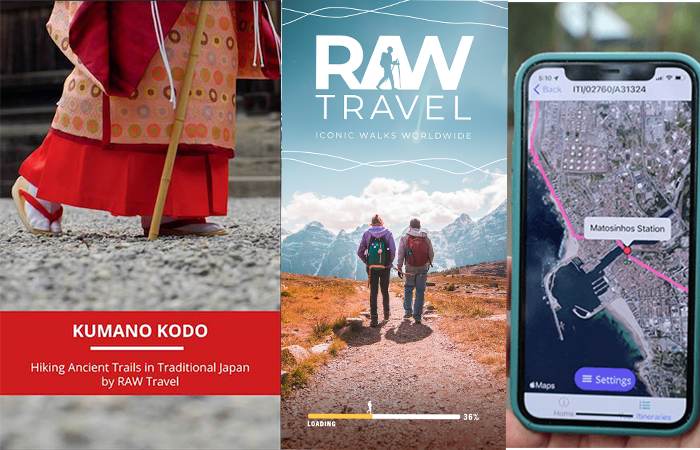
Kumano resources
Finding your way
We have researched and published our own Kumano Kodo Guidebook based on the experiences of many years of running trips here and have supplemented this with our Navigation App. Designed to help you navigate easily on the trail, it shows your location in real-time without any internet connection needed. The App has many great features; it shows you weather forecasts localised for each of your overnight stops, and information on the location of each night’s accommodation. There are important reminders, safety information, videos, and emergency contact information for your route. It also has a unique audio feature that can tell you about places and points of interest as you approach them on the trail.
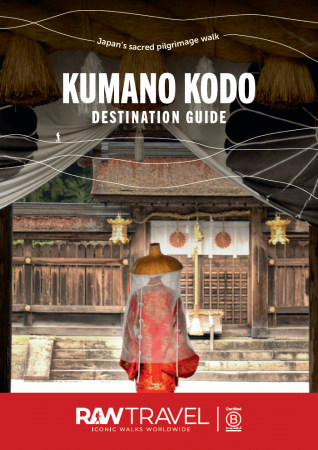
Exclusive Guide
get inspired
Japan’s ancient Kumano Kodo trails are nestled in the verdant mountains of the southern part of the beautiful Kii Peninsula, just south of Osaka. This lush and rugged area has been considered the abode of the gods and worshipped for centuries.
Our destination guide is bursting with all you need to know about walking the sacred Nakahechi pilgrimage route, the most popular and accessible of all the routes. You’ll love the peacefulness and tranquillity of the trail, the food (so elegant and refined!), the onsens (a cherished Japanese ritual), and the traditional family run guesthouses, full of character and charm.
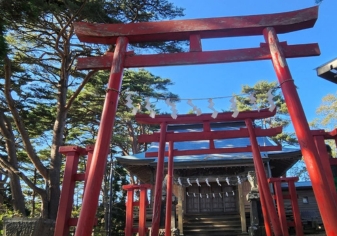
Michinoku Coastal Trail
Michinoku Coastal Trail – Northern Section (Self Guided)
- Self-guided hike along the Japan’s new coastal trail
- Spectacular walking in the rugged and remote Tōhoku region
- Soothing onsen, historic shrines and temples, and the freshest seafood
- Wonderful Japanese hospitality
$3,290.00
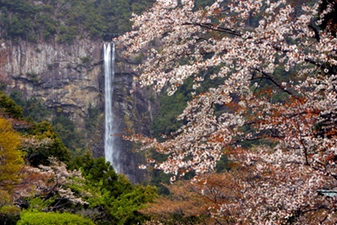
Kumano Kodo
The Spring Trip – Kumano Kodo
- A great option for solo travellers
- Stay in traditional guesthouses
- Spring is a wonderful time to hike the Nakahechi Trail
- Enjoy delicious handmade Japanese food with fresh local ingredients
$2,895.00
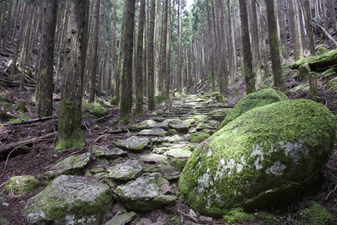
Kumano Kodo
The 7 Day Trail – Kumano Kodo
- Walk the full length of the Nakahechi trail
- Stay in traditional guesthouses
- Gain insights into life in rural Japan and the spiritual history
- Enjoy delicious handmade Japanese food with fresh local ingredients
$2,495.00
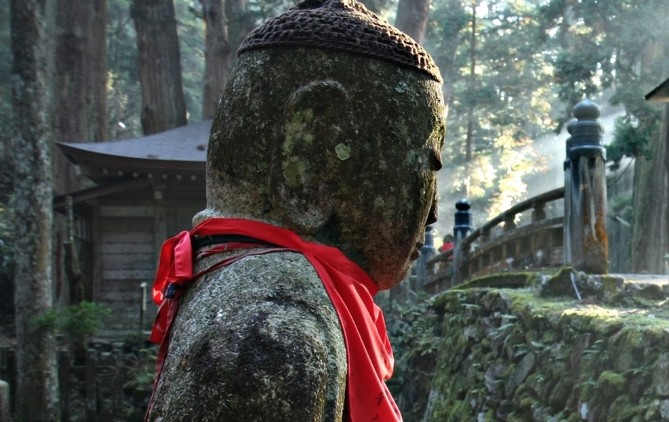
Kumano Kodo
Koyasan and Kumano Kodo
- Beautiful nature walking through rugged, forested mountains, quiet rural valleys and alongside rivers.
- Visit temples, shrines and traditional gardens
- Stay at a Japanese Buddhist temple
- Learn about traditional daily rituals, join a spiritual ceremony
$3,290.00
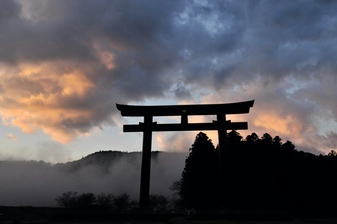
Kumano Kodo
The Highlights Trip – Kumano Kodo
- Stay in traditional minshuku and ryokans
- Enjoy a traditional boat ride on the Kumano-gawa river
- Savour delicious Japanese cuisine
- Visit all 3 Kumano Sanzan grand shrines
$2,250.00
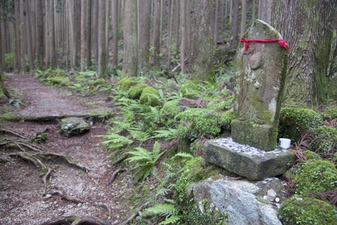
Kumano Kodo
The Extended Trip – Kumano Kodo
- Hike the full length of the Nakahechi route
- Enjoy a day on the challenging Kohechi route
- Journey along the Kumano-gawa river in a traditional boat
- Experience the life of a monk by staying in a Buddhist monastery
$3,650.00

Kumano Kodo
The Dual Pilgrim Trip – Kumano Kodo
- Participate in a Purification ceremony
- Experience Kumano Hongu Taisha Spring Festival
- Annual festival held in Hongu to honour the Kumano Deities
- Receive a commemorative Dual Pilgrim shirt and Tenegui
$2,950.00
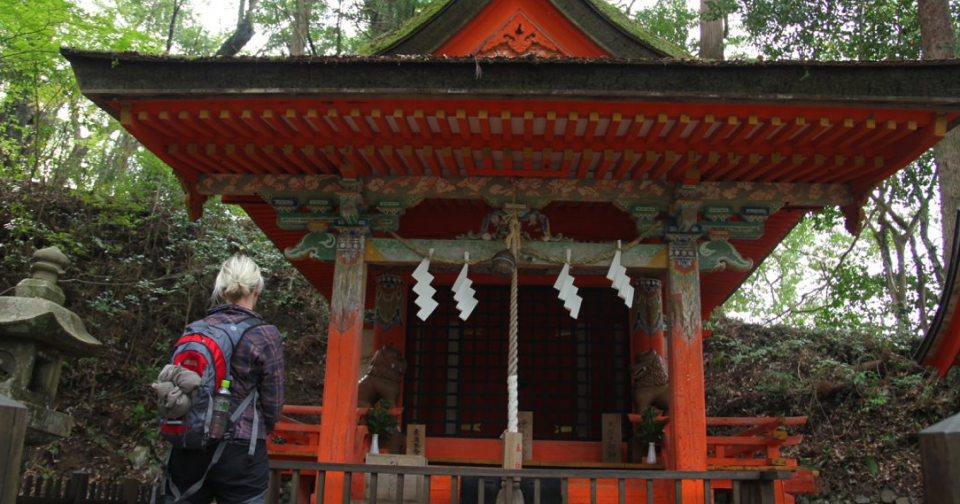
Kumano Kodo
Nakahechi & Kohechi trip – Kumano Kodo
- Challenging hike through the rugged forested mountains
- Walk the full length of both the Nakahechi and Kohechi routes
- Journey along the Kumano-gawa river in a traditional boat
- Stay in a Buddhist monastery in Koyasan
$4,495.00
TRIP date selection
when would you like to travel?
Please select your preferred dates for on-demand trips or select a scheduled date for group departures. If you have booked a self-guided trip please understand that because your trip date is on demand and we must check availability of all properties on your chosen dates before it can be fully confirmed


